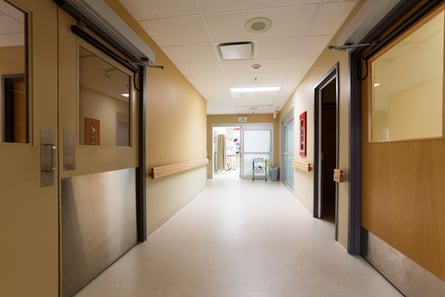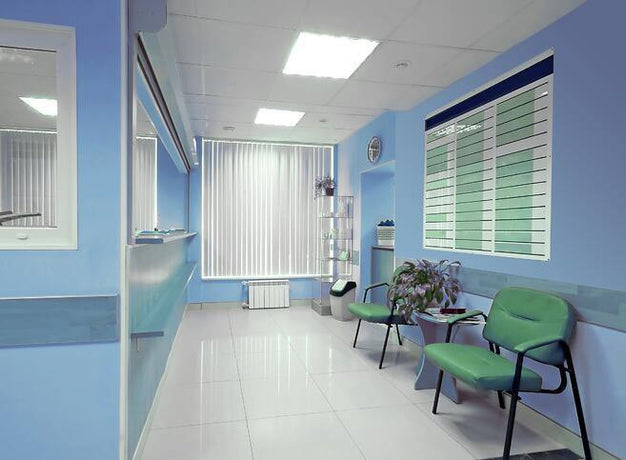- No products in the cart.
3 Steps You Can Take to Increase Hospital Security
03
Apr
When you see the headline, it feels like a bad case of déjà vu. Unfortunately, it's reality: violent incidents have put hospital security practices back in the news.
Last week, a psychiatric patient attempted to strangle a nurse at Montreal General hospital in Montreal, Quebec.
According to the Montreal Gazette, a 25-year-old patient attacked a nurse during the night shift, choking her with his bare hands and throwing her to the floor.
Thankfully, the attack was stopped by a staff member who, by chance, walked by the nurse's station, saw the commotion and stepped in.
The narratives that emerged after the incident were pretty familiar: the nurses and doctors blamed the administration for insufficient staffing, the administration blamed the security providers, the security providers blamed the administration.
Remarkably, that wasn't the only recent incident north of the border: a mental-health patient stabbed a fellow patient at an Ontario hospital back in late August.
There are similar themes in all of these incidents: budgets were cut and decisions were made without taking security into consideration.
Safety, not budget, should be the real bottom line
In an ideal world, budget wouldn't be an issue. Hospitals would be able to add all the security measures they wanted without worrying about where the cash was coming from.
But at its core, a hospital is a business, so the budget is always going to be a legitimate issue.
Many healthcare facilities around North America are seeing their budgets cut and are looking for ways to shrink things down.
Unfortunately, those cuts often impact the security of the facility, for a simple reason: facilities don't see security as a need until...well, until it's needed.
That may seem like a contradiction, but a finance person can see a department of 5 security guards and think, "we've never had an incident, why do we need five?" The finance person doesn't realize that the reason there hasn't been an incident is because of the staff of 5 guards.
In this era of tightening belts, here are three methods for increasing safety and security in a hospital that shouldn't be subjected to budget cuts.
1. Always station security staff in your most volatile areas.
One of the more frustrating aspects of the incident in Montreal is that it occurred in a psychiatric unit. These units of a hospital are known to have patients who act out without warning, making a security presence essential.
A good rule to follow is to always have security officers stationed in the most volatile areas of your facility, regardless of the level of activity or the time of day.
Montreal General Hospital probably rationalized its decision by saying that it was the overnight shift and fewer people are around, making security less important.
However, security should never be considered "less important" if it's in a highly-charged, potentially chaotic area of your facility, like a psychiatric unit or an emergency room.
2. Reduce the number of areas of your facility that are open to the public.
We've discussed before how it's tough for hospitals to both welcome guests and maintain an acceptable level of security.

A hospital must be able to openly accept visitors in order to function; however, the open nature of most facilities increases the risk of guests wandering around unauthorized areas.
One way of keeping an eye on more of your guests and decreasing the liability that comes with guests going to "off-limits" locations is to cut back on the parts of your facility that are open to the public.
This helps keep the majority of your guests in a central location, where they can be better monitored by security cameras or officers.
It also keeps guests out of your hallways, where they could potentially wander into patient rooms, laboratories and more.
You can reduce access to areas of your site in a number of ways, including putting access card readers on locked doors and stationing security guards at all doorways that lead from one area to another.
3. Screen all visitors to your site before they're given access to the property.
One of the best ways to minimize security threats at a healthcare facility is to limit the number of "threatening" characters you allow on-site.
Obviously this isn't as easy as looking for a "bad guy" sticker on a visitor's jacket; instead, you can use a Visitor Management system with watch lists to weed out potential bad actors.
To do this, install a visitor check-in system at your public entrances. When a guest arrives, he or she will be asked for a driver's license, which your check-in employee will scan. Your system can check the guest's name against a number of databases, including sex offender registries.
If there are any issues, the system will flag the user, enabling your employee to deny entry to the guest.
Screening all guests upon entry allows a facility to have more power over who's coming and who's going, as well as limiting the number of nefarious characters allowed on-site.
A good hospital security system is a multi-faceted solution, balancing access control, Visitor Management and modern technology.
Fortunately, we're experts in all three! Contact us for more information on any of the concepts mentioned above. An expert member of our healthcare team will be happy to discuss your needs and potential solutions.

 USA
USA





